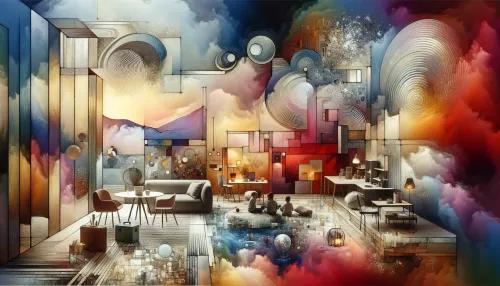
Pioneering Spaces: Designing Autism-Friendly Urban Environments That Foster Independence

Towards Inclusive Cities: The Movement to Create Autism-Friendly Urban Spaces
The movement toward creating autism-friendly urban spaces marks a significant shift in urban planning, recognizing the diverse needs of individuals on the autism spectrum. As awareness grows, city planners, architects, and community leaders are actively pursuing designs that cater to the sensory, cognitive, and social needs of autistic individuals.
The goal is to create inclusive environments that not only accommodate but also empower autistic individuals, promoting their independence and well-being within the urban landscape.
Sensory-Smart Planning: Integrating Sensory Needs into Public Space Design
Sensory-smart planning is at the core of creating autism-friendly urban environments. This involves thoughtful consideration of sensory stimuli such as light, sound, texture, and spatial organization within public spaces. For example, incorporating quiet zones in bustling areas, utilizing soft lighting, and employing natural materials can significantly reduce sensory overload for individuals on the autism spectrum.
Adopting design principles that embrace sensory diversity ensures that public spaces are welcoming and comfortable for all residents, including those with sensory sensitivities.
Pathways to Independence: Safe and Navigable Urban Environments for Autistic Individuals
Designing safe and navigable urban environments is essential for fostering independence among autistic individuals. Clear signage, intuitive wayfinding systems, and structurally accessible pathways contribute to creating environments where individuals with autism feel confident and capable of navigating independently.
By prioritizing safety and ease of navigation, urban planners can enhance the autonomy and self-reliance of autistic individuals within city settings.
Green Sanctuaries: The Role of Nature and Outdoor Spaces in Supporting Autistic Well-being
Nature and outdoor spaces play a crucial role in supporting the well-being of autistic individuals within urban environments. Access to green sanctuaries provides opportunities for sensory stimulation, relaxation, and engagement with natural elements. Parks, gardens, and outdoor recreational areas offer peaceful retreats where individuals on the autism spectrum can find respite from urban bustle and connect with nature.
Integrating green sanctuaries into urban design enriches the overall fabric of cities while offering inclusive spaces for autistic individuals to thrive.
Community Collaboration: Involving Autistic Voices in Urban Planning Initiatives
Effective collaboration with the autistic community is integral to the success of autism-friendly urban planning initiatives. Involving autistic voices in decision-making processes ensures that designs align with their unique perspectives and requirements. This approach fosters a sense of ownership and inclusivity while cultivating a deep understanding of how urban spaces can better serve individuals with autism.
By valuing the insights of autistic individuals, urban planners can co-create environments that authentically reflect their needs and aspirations.
Lighting the Way: Innovations in Lighting Design to Reduce Sensory Overload in Public Spaces
Innovations in lighting design present opportunities to mitigate sensory overload in public spaces for individuals on the autism spectrum. Implementing adjustable lighting settings, minimizing glare, and employing soothing color schemes contribute to creating visually comfortable environments. By harnessing technology and design innovation, cities can transform public spaces into inclusive settings where lighting is tailored to accommodate diverse sensory needs.
Prioritizing lighting solutions that promote visual harmony enhances the overall accessibility of urban environments for autistic individuals.
Navigating the Challenges: Strategies for Implementing Autism-Friendly Infrastructure on a Global Scale
Implementing autism-friendly infrastructure on a global scale requires strategic approaches that address diverse cultural contexts and regulatory frameworks. From garnering cross-sector support to advocating for policy changes, effective strategies encompass coordinated efforts across governmental bodies, advocacy groups, and industry stakeholders. By navigating these challenges proactively, cities can move toward embracing universal design principles that cater to the needs of all citizens, including those with autism.
Strategic planning and collaboration are fundamental in surmounting obstacles and fostering positive change on a global scale.
From Theory to Practice: Case Studies of Successful Autism-Friendly City Projects
Examining case studies of successful autism-friendly city projects provides valuable insights into actionable strategies and best practices. By analyzing real-world implementations, urban planners gain practical knowledge on integrating autism-friendly design elements into public spaces. These case studies showcase how innovative approaches yield tangible benefits for autistic individuals while also enriching the urban fabric as a whole.
Drawing from successful case studies offers inspiration and guidance for cities worldwide seeking to embark on similar transformative journeys.


